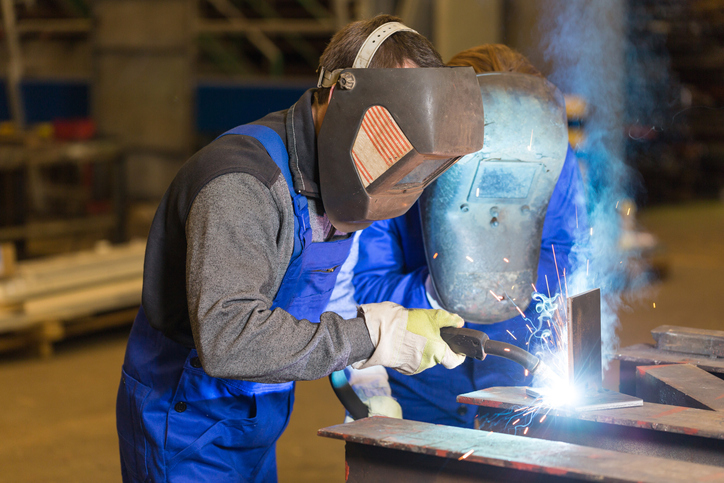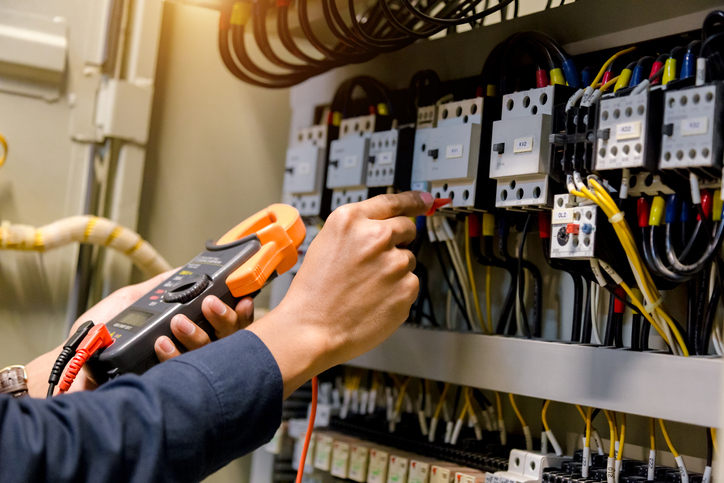Category: Uncategorized
Considering Welding Training? A Day in the Life of an Apprentice Pipefitter
December 20, 2022
Pipefitters play very essential roles in the environmental context. They oversee the safe assembly, installation, and maintenance of a building’s pipe systems after studying the building’s blueprints. In addition, they also supervise the safe discarding of debris after every welding job, among other specialized duties.
To execute their duties optimally, pipefitters need to develop a unique set of skills. Some of these skills can be taught–trade schools in Canada offer programs that provide theoretical education. However, mastery of these skills can only be achieved through hands-on experience.
This is why a pipefitter apprenticeship is critical after completing your welding training. An apprenticeship typically lasts between three and five years. It offers a chance to learn the ropes of the trade under the watchful eyes of a veteran before you’re ready to stand on your own.
What do apprentice pipefitters do during this period? Here’s a peek at the daily routines of an apprentice pipefitter.
Apprentice Pipefitters Put Their Welding Training Into Practice
While a good welding program provides students with theoretical and practical learning, an apprenticeship enables them to truly dip their toes into the role, assisting and learning directly from veteran welders while putting the knowledge they learned into practice. The apprenticeship period allows budding welders to truly learn on the job.

Apprentice pipefitters honing their crafts under a veteran welder carry out their learning in the field. Apprenticeships are designed to give apprentices a good idea of what to expect from a career as a welder. To achieve this, greater emphasis is placed on practical education.
What this entails is that apprentice pipefitters are allowed to perform all the duties a veteran welder may be expected to perform, including:
- Testing pipe systems to ensure functionality and safety
- Assembling and securing tubes, pipes, and other fittings
- Installing, troubleshooting, and maintaining piping systems
- Testing installed systems and verifying compliance with industry standards
- Measuring, cutting, and threading pipes to specifications
- Using and maintaining industry-specific tools and equipment
Assist Veteran Welders
As part of their training, apprentice pipefitters assist master tradespeople with specific tasks on jobs. The apprentice may not be tasked with anything particularly dangerous or difficult at first; however, smaller tasks like fetching the welder’s tools, assembling and cutting pipes, and cleaning up the site after a job are part of the apprentice’s role.

With time, as the apprentice develops their skills and confidence, they will be trusted with more specialized duties.
Interact with Customers
As part of their welding technician training, apprentice pipefitters must develop soft skills. Hands-on training takes care of such skills as attention to detail and resilience, but good interpersonal and customer relations skills can only be honed through constant customer interaction. Thankfully, welding training takes care of these too.
On days when they go out on a job with their veteran welder trainers, apprentice pipefitters often serve as links between customers and the welder. They answer the customers’ questions and queries and relay their instructions to the welder.
Interested in training at a reputable welding college?
Contact NATS to learn more about our programs.
Careers in welding are a great move for people looking for exciting, fulfilling, and rewarding careers where they can use their hands and specialized skills. If you’ve always wanted to travel, have your pick of different specializations in your career, or if you like being judged based on skill, it might be the path for you. Welding classes can set you on the right track to building your skills and discovering what you want to do within the world of welding. Graduates move on to become apprentices to ironworkers, pipefitters, construction millwrights, boilermakers, or welders. The opportunities are vast and you can find the place where you fit best.
If you’re thinking about welding training, it can be helpful to see why your future career could be a rewarding choice for you personally. Read on to learn what the profession has to offer and how you could benefit from it.
Why a Career in Welding Could Be a Great Move for You
You Can Have Travel Opportunities
- Welding is a useful skill in many environments, including under water!
- Some people in the welding industry travel for a living
- It’s common for welding jobs to pay for travel
Apprentice Welders Can Support one Another
- Many online communities exist for welding
- Sharing and trading advice, information, or opportunities is common
- The large community can make finding jobs easier
You’ll Be Judged Based on Your Skill Level
- Many employers require a hands-on test
- After your training, you can secure a job with your skills
- Many positions will not involve judging you primarily on experience level
It’s a Profession that Is Valuable in Many Industries
Students of welding programs can become:
- Apprentice ironworkers
- Apprentice pipefitters
- Apprentice construction millwrights
- Apprentice boilermakers
- Apprentice welders
Apprentices Get to Learn From Others on the Job
- Paid positions in the field give you a chance to master the trade
- You can make connections and contacts in the industry
- Take your training to the next level by applying it to a real-life situation
It’s Also an Art Form
- Creative people might choose to expand their welding to include a hobby
- Metal sculptures can be made using welding skills
- This is a way to use training to satisfy both artistic and technical pursuits
Fun Fact: About half of all products manufactured in the world have welding as a part of their construction. These products include bridges and computers.

Cabinetmaking is an age-old skill within the woodworking tradition. Nowadays, skilled workers are applying cutting-edge tools and technology to push the trade into the modern landscape.
Graduates of cabinetmaking school open the doors to practical career opportunities in cabinet installation, store fixtures construction, and architectural millwork. In order to secure their footing in the field, graduates should know how to transform their knowledge and training into marketable skills. Employers want to feel confident that their workers have the experience and skillset to complete jobs to a high standard.
Here’s a closer look at how graduates can craft an impressive resume to land work in cabinetry!
Showcase Your Practical Experience
First and foremost, cabinetmaking is a hands-on trade. Skilled workers will need to know the fundamentals of shaping, cutting, and assembling different types of wood into a finished product. For that reason, employers are looking for someone who not only understands the theory of cabinetry, but who has practical experience working with the different materials and tools of the trade.
Cabinetmaking training combines classroom teaching with hands-on training in a lab. Students will work with industry-grade equipment–including a table saw, miter saw, drill press, joiner, edge banding machine, and power tools. When applying for a job in cabinetry, students should include examples of their practical experiences and specify how they have used different tools to complete their work. Employers may be scanning resumes for keywords, so it’s important to use industry terminology in your applications.

Highlight Employable Skills
Cabinetry is a dynamic profession for individuals with a range of theoretical and practical skills. Employers will be looking for workers with strength in design, construction, and organization. Students enrolled in cabinetmaking school will also learn the importance of soft skills. Time management and the ability to multi-task within tight deadlines are developed throughout the course. The ability to organize your work independently will demonstrate that you are a responsible and reliable worker.
As cabinetry entails physically demanding work, stamina and strength are valuable traits. Employers want to know that you are capable of performing various tasks in an efficient manner. Additionally, creativity and design skills are essential to crafting cabinets that are both functional and aesthetically pleasing. The key skills on your resume will not only showcase your personal strengths, but also demonstrate your understanding of what it takes to work in cabinetry.

Include an Official Degree From Cabinet Making School
Employers today are looking for candidates with an in-depth working knowledge of the trade. Training someone from scratch takes time and resources, and many companies are looking to hire someone with a pre-acquired skill set.
A degree from a trade school gives candidates a significant advantage in the job market. Students of a cabinetmaking program will learn the fundamentals of woodworking, blueprint reading, operating machines, surfacing techniques, and laminating procedures. They also gain practical experience using industry equipment. Upon graduating, students can immediately apply their training to a job in cabinetry. With a recognized degree from a trade school, employers can rest assured that their workers have the skills to jump straight into professional work.
Are you ready to enroll in cabinet making courses?
Contact NATS today!
Infographic: Things you Need to Know About Pursuing a Career in Home Renovation
April 07, 2021
Home renovation is an exciting choice for study and for a professional path. When you pursue home renovation as a career, you allow yourself to keep learning every day and develop skills that help people, while allowing you to see tangible results from your efforts. Home renovation school equips you with the skills you need to succeed, such as the basics of plumbing, carpentry, and stair construction.
There are some things that end up being very important after home renovation technician training that may surprise you. For example, communication is much more important than many realize, and you may spend quite a bit of your time speaking with homeowners. You also will need to be aware of tasks like record-keeping and managing dust, in addition to the various tasks you are responsible for.
If you’re curious about home renovation as a career and wondering what you need to know before chasing your dream, read on to learn more!
Things you Need to Know About Pursuing a Career in Home Renovation
It Involves a lot of Different Tasks
- Basic plumbing
- Carpentry
- Interior and exterior finishes
- Basic cabinetmaking
- Stair construction and installation
- Roof construction
These are all skills taught through hands-on training in a home renovation program. You may choose to specialize in your career!
Did you know? Kitchen renovations are a place many homeowners start to add value to their home.
You’ll Keep Learning
- No two homes are exactly alike
- You may work with others who have more experience
- You can solve problems and learn from challenges
Fun Fact: Basement suites are becoming more of a common renovation, as rising interest rates are creating a need for supplemental income.
Keeping Records Is Important
- Contracts are written records of agreements
- Records protect both you and the homeowner
- Keep a record of payment
- Keep copies of the emails or messages you exchange with homeowners
- Confirm information in writing using follow-up messages
You Will Make Mistakes Sometimes
- Things can go wrong on projects
- Owning up to the mistake right away is the professional response
- Communicate with the homeowner clearly
- Find a way to correct your work
- This approach makes you more trustworthy overall
Homeowners Are Curious
- Many people enjoy receiving tips and information on their homes
- Explaining your choices helps homeowners trust you
- Help people take better care of their homes
You’ll Find Dust Becomes an Issue
- The biggest cause of mess in home renovation is dust
- Dust spreads easily and gets in vents in homes
- You will benefit from techniques like covering vents
HVAC & The Environment: What You Should Know If You’re Pursuing an HVAC Career
March 10, 2021
Heating, ventilation and air conditioning (HVAC) systems have an essential function. They keep our homes cool in the summer and warm in the winter, in addition to regulating the quality and movement of the air that we’re breathing indoors. While HVAC systems aren’t the home appliances with the most severe environmental impact, there are still a few ways that HVAC systems can contribute negatively to the environment. HVAC systems may use refrigerants that can damage the ozone layer, and they also use electricity, the consumption of which burns fossil fuels and contributes to ozone depletion.
While HVAC systems can cause environmental harm, there are many solutions offered today which have the potential to reduce the impact HVAC systems can have on the environment. Some of these solutions can be implemented by HVAC technicians themselves. If you’re interested in becoming an HVAC technician, here’s what you need to know about the environmental impact of these systems and the solutions available today.
Those in an HVAC Career Should Know That HVAC Systems Can Emit Harmful Refrigerants
Air conditioning systems rely on cooling agents, or refrigerants, to drive cold air into homes, but these cooling agents have a known negative environmental impact. Hydro-chlorofluorocarbons (HCFCs), hydro-fluorocarbons (HFCs) and chlorofluorocarbons (CFCs) are all refrigerants that have been reported to contribute to ozone depletion and global warming, as these compounds are greenhouse gases. In Canada, Federal Halocarbon Regulations, 2003, bans the release of halocarbons from air conditioning systems in quantities over 0.1 kg of halocarbon per 01. kg of air, but these refrigerants are still being released into the atmosphere in lower quantities. Freon (R-22), a commonly used HCFC, has been banned in Canada for use in newly manufactured HVAC systems, and Puron (R-410A), a less-harmful HFC, is now more commonly used. However, this refrigerant still contributes to direct and indirect greenhouse gas emissions.

While it is difficult to control the emission of refrigerants into the atmosphere due to the range of HVAC systems in use today, advancements in technology have the potential to reduce their environmental impact. If you want to become a HVAC technician, you’ll probably become familiar with R-32 as a possible solution. R-32, or difluoromethane, is an HFC refrigerant known to have a lower impact on greenhouse gas emission than R-410A, and is being explored by HVAC engineers as an option to reduce the environmental impact of HVAC systems. It has been found that R-32 can even be used to make these systems more energy efficient, as it has better thermodynamic properties. In the future, developments in the use of alternative refrigerants such as R-32 have the potential to reduce the amount of greenhouse gases in the atmosphere as a result of HVAC systems.
HVAC Systems Use Energy
It’s important to be aware that HVAC systems consume high amounts of energy. Depending on the type of system and the season, an air conditioning system can consume around 3000 to 5000 watts of electricity every hour. Electricity consumption results in the burning of fossil fuels and the release of carbon dioxide into the atmosphere, a major cause of ozone layer depletion. One way to determine how much energy an air conditioning system is using is by checking its SEER rating. Older air conditioners have lower SEER ratings and tend to consume more energy.
As a way to reduce the amount of fossil fuels released, HVAC products that harness renewable energy sources are also becoming a more popular option. Renewable energy sources such as solar and geothermal energy can reduce the environmental impact of HVAC systems by using sources of power that don’t burn fossil fuels. Solar energy harnesses energy from sunlight rather than from fossil fuels to power HVAC systems, while geothermal heat pumps convert natural energy stored underground for use.

Small-Scale Solutions to Reduce the Environmental Impact of HVAC Systems
The environmental impact of HVAC systems can be reduced on a small scale, and as a professional in an HVAC career, this is an area where your services are especially useful to clients looking to reduce their own personal energy consumption and greenhouse gas emissions. The efficiency of an HVAC system depends on the equipment being used. If a system’s equipment is outdated, chances are it’s using more energy or emitting a greater quantity of harmful refrigerants. Advising environmentally-conscious clients to replace old HVAC systems with an updated, energy efficient system can reduce the negative impact of older units.
Additionally, HVAC systems should be regularly maintained in order to prevent excess emissions. Air filters should be replaced regularly, ducts and pipes should be inspected for leaks, and valves and steam traps should be examined for efficiency.
If you want to be equipped with the ability to make HVAC systems less harmful for the environment, a program at the North American Trade Schools (NATS) could be right for you. Jason, a graduate of the North American Trade Schools HVAC technician program, says he chose NATS because of its reputation as a “hands-on school.” He notes, “They teach you what you need to know and then you apply your knowledge.” Practical, experiential training enables HVAC technicians to apply their newly learned skills in the field in innovative ways. That includes approaches that may help to reduce the environmental impact of HVAC systems.
Are you interested in attending HVAC school?
The North American Trade Schools program could be right for you!
Electrical Power Systems in Buildings Explained for Those in Electrician School
August 25, 2020
Have you ever wondered how electricity flows into buildings? An electrical power system helps make this into a reality. With electrical power systems and their parts and conductors, they can vary based on how big or small the building is. The processes used to deliver electricity into those buildings can also differ based on the size and nature of the building. Electrical power is delivered and converted to any load in the building using the electricity. The power being distributed within the buildings can differ depending on both the size of the building using it and the system itself.
Understanding how electricity travels towards outlets in rooms in a building is important to know for your electrician career, as well as the necessary procedures for it to travel efficiently within the building, regardless of size. Here’s what an aspiring electrician should know about electrical power systems in buildings.
Important Facts for Electrician School Students to Know
For any electrical power system, electricity is delivered via conductors, which brings power between two different areas of the building. Usually in electrical cable form, conductors deliver electricity to a load device from a generator, and are often made of copper. It’s typically at extremely high voltages that power is transmitted from the plant to buildings, as this is what is most effective. However, smaller buildings have electricity delivered through a meter with lower voltage numbers via a transformer. A switchgear will then be used to not only be an on-off switch for the circuit (with current flow being either automatic or manual), but also to protect equipment from the power supply. Lastly, a load device such as a heating unit is used to turn electricity into energy types like light or heat.

Larger-Sized Buildings: Bigger Spaces Need Bigger Systems
A big building needs an equally big load of electricity. Electrical equipment must also be proportionately sized for the power it would carry, and a transformer would be used to lower the high voltages coming through it. A switchgear—or multiple ones, if the building needs more than one transformer—then delivers electricity to various parts of the building, via either a bus or feeder. Students in electrician school probably already figure this is the case, but large-scale buildings need more power, and electrical systems for these types of buildings are used to study factors like load flow to ensure the conductors and equipment are sized accordingly. With taller buildings such as high-rise apartment complexes, high-voltage lines can be brought into the building in order to place different transformers in rooms on different floors.
Smaller-Sized Buildings and Residences: A Simpler Process for Power
Those in electrician training may already know that smaller buildings and homes do not have a very complex system for distributing electricity. In these instances, either a utility pole or a pad will have the transformer attached to it–reducing the voltage before power goes to the meter. About 13,800 volts from the utility is significantly reduced, with power later going from the meter into the building. It then travels to a panel board with a series of breakers. Various circuit-based components in a home, such as lights or electrical outlets, will have this power flowing toward it. Residential homes often use low voltages of electricity, ranging between 110 and 260 volts. Smaller buildings such as low-rises tend to use step-down transformers, which reduce voltage to various levels depending on the size of the device using it.
Do you want to start your maintenance electrician training?
Contact North American Trade Schools to learn more!
Some safety risks are far more obvious than others. A welding flame, for instance, is easy for the naked eye to spot, and measures are consciously and subconsciously taken to avoid getting in direct contact with it. Welding fumes aren’t as obvious, but there are lots of steps which can be taken to ensure that a workspace remains safe and healthy.
Depending on a variety of different factors, welding can produce iron, manganese, nickel, zinc and many other types of fume particles. Poorly skilled welders put themselves at risk of illness by using ineffective techniques in unsuitable welding environments. Here is a useful guide on how to maintain good health throughout the process.
Different Types of Welding Produce Varying Fume Levels
Welding fumes are even smaller than common dust particles, and come from welding consumables and base metal materials. Students in welder school learn that the welding technique they use has a big impact on the amount of fumes produced. Submerged arc and resistance welding are among the low risk options, while flux core and arc gouging produce some of the highest amounts of fumes.
Fume safety plays a big part in a welder’s wellbeing
The type of fume particle also differs based on what types of metals are being used. Iron and manganese are usually by-products of mild steel welding, while chromium and nickel are often produced when working with stainless steel. Of course, it may not always be possible to choose a safer welding technique, but it should nevertheless be a consideration before the start of a project.
Ventilation Should Always be Considered After Electric Arc Welder Training
Just like the chimney or vents in a house, there should always be an easy escape route for fumes created in a welding workspace. Take the opportunity to carry out welding projects outside where possible. However, this may not be practical at all times, so make sure that adequate airflow is allowed into the building when working indoors.
Ventilation is vital in a welding workspace. Vents can be built into the walls, doors or windows, but local exhaust ventilation is a modern way to remove dangerous fumes much closer to the source. These units are like vacuums which can be placed close to the welding workspace. This creates a far more pleasant working environment, allowing you to maintain concentration throughout the welding process.
Follow Professional Best Practices During Welding Projects
Welders should pay attention to the positioning of their head while carrying out work. Make sure that it’s kept out of direct contact with fumes so that these particles are not being breathed in. This is a particularly common problem when welders work in a crouched position. If possible, sit down while carrying out welding work. This reduces the possibility of fumes entering the breathing zone. Electric arc welder training is a great time to develop correct safety techniques and good habits which can be carried through your career.
Welding in a crouched position can be hazardous
Protection equipment is also an important part of a welder’s toolkit. Respirators can be worn over the mouth and nose, to prevent the inhalation of dangerous fumes. They can come in many shapes and sizes, so welders need to make sure that they find an option which is both comfortable and effective.
Interested in obtaining welding certification?
Contact North American Trade Schools to kick-start your new career.
Training to become an electrician opens up a large array of career opportunities. That’s because electricians are required in just about every industry, and electrical systems themselves can be quite complex. As a result, a number of specializations within the electrical field are available after your studies, many of which are in high demand and pay a high salary.
While there are many specializations you can focus on as an electrician, here we’ll look at just three popular ones. These career paths, which all have their own various sub-specializations, are a great indication of the variety of work you can find as an electrician.
Maintenance Electrician Training Can Prepare You for Work on Electric Motors
As an electrician, you can focus on working on electric motors. People who work on electric motors go by many different job titles, including electric motor repairperson, electric motor systems technician, and winder electrician. In any of these positions, you’ll be the one who repairs and maintains electrical motors and equipment.
Because motors are utilized in so many different industries, your electric motor systems technician career can take you down many different sub-specializations. For example, you could focus on repairing electric generators at homes and businesses, or you could be employed at a factory where you could help troubleshoot electrical equipment breakdowns on assembly lines.
As a Construction Electrician You’ll Get to Install New Electrical Systems
A common career path that you can pursue after training is that of a construction electrician. Construction electricians, as their name implies, are the electricians who do electrical work during the construction and renovation of buildings. They are responsible for laying out and installing electrical systems for new buildings, which means they are typically hands-on people and practical problem solvers.
If you become a construction electrician, you can also specialize in various sub areas. For example, some construction electricians focus on installing security systems, while other construction electricians focus on industrial or commercial systems. Being a construction electrician tends to be a physically demanding job, and you may also be required to work outside from time to time. However, there’s a lot of variety in this job, which can make it fun and rewarding.
Become a Maintenance Electrician or Electrical Technician to Focus on Troubleshooting
Maintenance electricians and electrical technicians are the professionals responsible for troubleshooting problems with an existing electrical system. Unlike construction electricians, they typically don’t design or install electrical systems themselves. Instead, they focus on maintaining an existing electrical system or they may focus on one specific aspect of that system. For example, industrial and manufacturing sites have complicated electrical systems, so a maintenance electrician may focus on just one area at a particular site while other maintenance electricians at the same site might focus on different components of the same electrical system.
If you become a maintenance electrician or electrical technician, you may work at one site, such as an office building or manufacturing plant, or for a single company. Many maintenance electricians are also hired by municipalities and utility companies. You also have the option of working independently and helping maintain electrical systems at different residences and businesses.
Do you want to pursue a new career?
Contact North American Trade Schools to learn about our maintenance electrician training.
How to Start Your Own Business After Home Renovation School
April 02, 2019Ontario’s population is growing, and high housing prices are encouraging people to renovate their homes rather than buy new ones—which means now a great time to begin your home renovation business. When done right, running your own home renovation business can be highly lucrative and it gives you the chance to be in charge of your career path.
If you’re thinking about starting a business after home renovation school, you need to make sure you have a plan in place for doing so. Let’s take a look at a few of the steps you should take to help ensure your home renovation business has the best chance of succeeding.
Use Your Home Renovation Training to Decide What Services You Will Offer
The first step you need to take is to decide what services your business is going to offer. Some home renovation businesses offer a wide array of services, like complete home renovations, which require you (and your employees) to have a broad skill set. However, you might want to focus on more specialized renovation projects, like bathroom remodels and kitchen renovations, for example.
In either case, home renovation training will help prepare you by covering a large number of different skills, such as plumbing, electrical, flooring, and drywall. By learning all of these skills during your training, you’ll be well positioned to decide whether you want to focus on a single area of expertise or offer more wide-ranging services.
Get the Proper Licences and Pay Attention to Regulations Affecting Home Renovators
Construction is a highly regulated industry and chances are you will need at least a few licences before getting started. For example, if you are doing plumbing work in Toronto, you will need a plumbing contractor licence. You may also have to register your business name and, if you are incorporating, you will need to file Articles of Incorporation. You will likely also need to register with the Workplace Safety and Insurance Board (WSIB) and ensure that your business is protected with liability insurance.
Talk to Others in Home Renovation School for Help Finding Employees
When you’re starting out, you may just be a one-person operation. Given that your home renovation training will have prepared you for a number of different home renovation skills, it’s certainly possible to begin your business as a sole proprietorship with no employees other than yourself. However, if you plan on taking on complex projects, or if your business begins to grow, then you will either need to hire employees or find qualified subcontractors.
Word-of-mouth is often the best way to find reputable employees and subcontractors. Reach out to your classmates and teachers from home renovation school, for example, to see if they would be able to recommend anyone. Don’t forget to make sure all employees or subcontractors you hire are covered by the workplace insurance that is mandatory for them.
Talk to classmates from home renovation school for recommendations about potential employees
Marketing Should be a Top Priority for Any Home Renovation Business Owner
Most homeowners will only trust their home renovation project to a contractor or subcontractor who has an excellent reputation. When you’re just starting out, building a reputation can be challenging. Fortunately, digital marketing can help. Be sure you have a website and that your company is listed on all the major online review sites, like Angie’s List, Yelp, and Google My Business. Encourage satisfied clients to leave reviews of your business on these sites as positive reviews will strengthen your reputation and give you more online visibility.
Starting a blog where you provide home renovation tips is another great marketing idea. A blog helps establish you as an expert in your field, which in turn can lead to homeowners trusting you with their home renovation projects.
Digital marketing is a great way to build your home renovation business’ reputation and visibility
Do you want a career in home renovation?
Contact North American Trade Schools to learn about our programs.
Maintenance Electrician Training 101: Essential Starter Tools for your New Career
October 16, 2018As a maintenance electrician, you could find yourself handling a wide variety of jobs, from installing home electrical systems to diagnosing and repairing electrical malfunctions in industrial machinery. But whether you’re on the factory floor or a residential construction site, there are some tools that are essential for every electrician.
When investing in your first set of tools, it’s important to do some research. You don’t necessarily need the most expensive equipment, but you should make sure to buy the best possible product for the budget you have. These tools are likely to stay in your kit for a long time to come, so it’s worth making sure that they’re reliable, durable, and effective. You don’t want to be replacing parts constantly or having an important tool fail on the job. In the long run, a good set of tools will save you both time and money.
Tools for Cutting, Gripping, and Stripping Wires
Pliers are one of the most basic and commonly used tools in an electrician’s kit. You’ll need both side-cutting or diagonal pliers, for cutting wire, and needle-nosed pliers for gripping, pulling, and twisting. One thing pliers can’t do, though, is remove the insulation from wires, so you’ll also need a pair of wire strippers that can accommodate a wide range of wire gauges. These should all have comfortable grips and smooth mechanical motion, and like all of your tools, they should have insulated handles.
To remove the insulation from electrical wires, you’ll need a wire stripper
Protecting Your Safety With a Non-Contact Voltage Tester
After you finish construction school, you’ll want a good non-contact voltage tester to keep you safe on the jobsite. These handy, portable tools can detect an AC current without making direct contact with the source, even through standard wiring insulation. A simple pen-style option that you can keep with you at all times is ideal, and can usually be found for under twenty dollars. These tools are indispensible for keeping you safe on the job and avoiding accidental shocks, so reliability is the most important factor when considering which model to buy.
To Diagnose Electrical Issues, You’ll Need a Multimeter
A voltage tester is sufficient for telling you whether or not a wire or device is live, but for a more detailed reading, you’ll need a multimeter. These tools are used frequently by professionals who have completed maintenance electrician training to measure current, voltage, and resistance, and are indispensable when troubleshooting electrical problems. Prices can range from less than fifty dollars, up into the thousands, with more expensive models boasting a higher resolution, a wider range of values that can be tested, and extra features like the ability to measure capacity or duty cycle.
While analog interfaces are still available, digital has become the standard, and some models now feature an added clamp (called a clamp meter) that can measure AC current in a wire, cable, or other conductor without disrupting the flow. Shop around to find the best multimeter in your price range, and make sure that it’s suitable for the type of work you’ll be doing.
Other Essentials for Those Finishing Their Maintenance Electrician Training
Besides more specialized tools like voltage testers and multimeters, maintenance electricians will require some other more general tools for the jobsite as well. A good set of Phillips and flathead screwdrivers will be necessary, as well as a tape measure, hammer, flashlight, and utility knife.
It’s important for your screwdrivers to have a comfortable grip and a long range
Over time, you will likely add more specialized devices to your collection, but the tools listed here will provide a good starter kit for any new electrician.
Are you interested in an in-demand career in the trades?
Become a construction electrician with North American Trade Schools’ comprehensive training.





